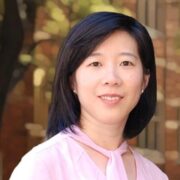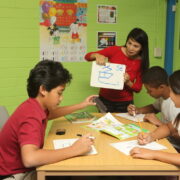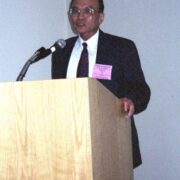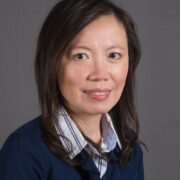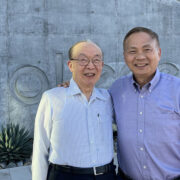我的教書生涯 – 從台灣小學老師到美國大學教授
作者 魏武雄
我小時候在台灣新竹寶山的農村長大。因為家境不好,初中第一名畢業,選擇保送新竹師範學校。畢業後分發到台灣最北端的石門鄉老梅國小服務,教五年級甲班。國語、算術、歷史、地理、自然,體育、勞作、美術全包。學生二十二位,十四位男生,八位女生。全天上課。除了國語課外,其他課程我都不太按照課本上課。和我家鄉ㄧ樣,老梅是個農村,不同的是寶山是深山裡的農村而老梅是個海邊的農村。家裡都養雞鴨兔狗。所以自然與算術課我都以鄉村事物雞鴨兔狗為例。歷史課我用講故事的方式。地理課則用團體旅行,一個地方一個地方的參觀旅遊。把學生當弟妹。一直把他們帶到六年級畢業。他們都很高興,不時的告訴我,他們很喜歡上我的課,我是唯一不體罰學生的老師。畢業後,除了兩位念初中,其他的都沒有再升學。不過有些後來離開老梅到台北市附近發展,事業非常成功,並多年尋找我的下落。1989年的春節,我非常意外接到他們從台灣打來美國的電話。從此每次回台,他們都一定舉辦同學會,大家相聚。
為了準備大學聯考,我要求第三年教只要上半天課的二年級。當時聯考分甲乙丙三組。理工甲組,文法商乙組,農醫丙組。師範學校沒有物理、化學、三角、幾何的課程。我因而選擇乙組。因為從小就喜歡國文、數學、和史地,自修這些高中課程我一點不覺困難。唯一例外的是英文。不同一般高中,師範三年,沒有必修的英文課。所以我服務期間,每天都要靠收音機收聽當年台灣大學外文系趙麗蓮教授的空中英語教室學英文。1962年服務期滿,我就以台灣大學外文系做為我大學聯考的第一志願並如願以償。
當時台大外文系有導師制度。我大二的導師是外文系畢業在美國念完博士回母校教書的顏元淑教授。在一次聚會裡,他告訴我們,他外文系同班同學畢業後到美國留學的很多。但是繼續念文學的只有他一個。其他的都轉念他系。因為沒有大學本科的基礎,都只念完碩士。除文學外,我也喜歡數學,並準備出國留學,所以念完大二,我就轉到聯考同屬乙組但用數學比較多的經濟系。以外文系的課程當選修,念完經濟系必修課。我就在1966年以第一名從台大經濟系畢業。也在同年以第一名考上台大經濟研究所。
1967年預官服役期滿。通過留學考試,考過GRE包括經濟學。臨時決定申請美國奧立岡大學(University of Oregon) 的經濟研究所,並於八月底匆匆離開台灣到美國留學。到達奧立岡大學時,學校已經開學一個多禮拜。申請時,我就準備念計量經濟學博士。註冊時,選課必須有指導教授簽名。當時我的指導教授是教計量經濟學的。他說奧立岡大學經濟系碩士生必須考GRE經濟學,及格才能畢業。我的 GRE advanced test經濟學成績已經達到他們碩士學位的標準,但我大學只修一學期的微機分,不可能寫計量經濟學方面的論文,要我到數學系修三門數學課。
第一學期念完三門數學課,我就轉到數學系。1969年五月修完數學學士學位,因為成績全A, 威斯康辛大學 (University of Wisconsin) 統計研究所給了我當年最好的獎學金,Graduate School Fellowship。我就從 Eugene 奧立岡坐greyhound bus到了Madison 威斯康辛。
1973年秋季,我的博士論文大致完成。看到佈告欄上天普大學 (Temple University) 統計系招聘教授的廣告。提出申請,很快收到回音,歡迎我到費城校園 interview。秋季班學期結束不久,Temple就 offer我tenure track 助理教授的職位。當時正值世界第一次石油危機,美國經濟不景氣。汽車工業開始製造八汽缸以下的中小型汽車。工作機會不多。我也就在其他大學招聘尚未開始,接受了費城天普大學助理教授的工作。
1974年七月底到了天普大學才發現當時商學院院長是美國勞工部來的,他是美國統計學會的院士。不但在商學院成立電腦計算機系也在商學院成立了經濟和統計博士班。為了提升統計博士班的教授陣容,他特別准許一年招聘三位教授: 從康乃爾大學請來的正教授,Dr. Raghavarao,從俄亥俄大學請來的副教授, Dr. Singh,和威斯康辛來的助理教授,我。
做為一個大學教授,除了教書之外,我對學術研究和服務也同等重視。因為天性耿直,事情只看對錯,有話直說。更重要的是,對學校的事務我都能提出有效的解決方案。所以系裡提早推薦我的tenure和升級。四年後的1978,我就成為tenured的副教授。1982年系裡的教授更推選我當系主任。那是一個很大的意外。因為秘密投票,另一位候選人是學術非常有成就的正教授,而我是一位出道不久的副教授。結果我卻以絕大多數票當選。而且連任兩屆,做到1987年。事實上,我在1986年才升為正教授。
當系主任時,我非常努力向公司募款,買電腦,學術期刊,研究參考書籍,建立了系裡的電腦室和圖書室。和院長商量,減輕教學負擔,讓系裡教授每學期教課不超過兩門。那時我們的系成長很快,系裡全職教授一共二十六人。商學院也擴增。教授辦公室不夠,分散在不同的大樓。有些系所乾脆全部搬到其他大樓。我卻經由協商,成功的把系裡教授全部聚在商學院大樓,Speakman Hall。我並成立系裡的學術研究報告系列,讓系裡教授和博士生在他們研究成果於Journal正式發表之前與大家分享。很多教授從世界各地到天普大學訪問我和系所,包括韓國教授,葡萄牙教授,意大利教授,和英國教授。系裡非常活躍。我們系被當時大學校長Liacouras選為天普大學最好的五個博士班之一。出版廣告向外宣傳炫耀,替天普大學吸引研究生。我一向熱心支持學校,捐助許多新建築,包括學生活動中心,Tuttleman Learning Center,和 Liacouras Center。當商學院在Speakman Hall 隔壁建立新樓,Alter Hall,募款時,除了商學院院長,我是全校捐款最多的教授。此外我也捐款成立獎學金,獎勵我們博士生的研究。商學院為了表示感謝,特別將我們系裡的會議室取名為 William W. S. Wei Conference Room。
1979年,美國和中國建交。當時天普大學有位牛滿江教授,早在美中建交之前,就常到中國推動天普大學和中國在北京許多大學之間的學術交流,並因而和鄧小平熟識。經過他的穿針引線,1979鄧小平訪問美國時,也同時接受天普大學Marvin Wachman校長頒贈的榮譽法學學位。之後,許多中國大學都派代表團到天普大學訪問。我因為會說中文,也常被校方請去和中國的代表團見面交談。由南開大學數學系系主任沈世溢教授帶隊的是其中之一。統計當時在中國大學幾乎都在數學系。我們談得很好。1987年,我第二任系主任任期期滿。沈世溢教授就向聯合國文教基金會申請到學術交流補助款邀請我訪問南開大學。我就在1988年秋季第一次訪問中國,並講授單變數與多變數時間序列分析。除了南開大學,我也接受邀請訪問了在北京的北京大學,清華大學,在上海的復旦大學,華東師大,以及在杭州的杭州商學院。因為我的訪問,南開大學和華東師大共有四位學生於第二年到天普大學統計研究所念博士。這也是我們統計研究所有中國留學生的開始。發展到現在,如同其他美國大學,目前我們的研究生大部分都是中國留學生。
訪問南開大學是我當訪問教授的開始。從那以後,我先後接受邀請,訪問了哥倫比亞共和國的哥倫比亞大學,韓國的高麗大學,新加坡的新加坡大學,土耳其的Middle East Technical University,香港的香港大學,以及台灣的中山大學,成功大學,台北大學,交通大學,和台灣大學。
學術研究是大學教授最重要的工作。我的研究興趣包括時間序列分析,預測方法,統計模型的建立,和統計運用。我發現的統計理論和方法包括new method in seasonal adjustment,aggregation and disaggregation,outlier detection,robust estimation,and vector time series analysis。Some of my most significant contributions include extensive research on the effects of aggregation,methods of measuring information loss due to aggregation,new stochastic procedures of performing data disaggregation,model-free outlier detection techniques, robust methods of estimating autocorrelations, statistics for analyzing multivariate time series,and dimension reduction for high dimensional time series。我發表的論文不算多,只有四五十篇。最欣慰的是我寫了兩本時間序列分析的書。第一本,Time Series Analysis–Univariate and Multivariate Methods,1990年出第一版,共十六章;2006年出第二版,共二十章。這本書被很多大學研究所選為時間序列研究參考書或教科書。我常常收到世界各地寄來稱讚的電子郵件。2009年中國北京人民大學統計學院易丹輝教授把它翻譯成簡體中文。2012年台灣的淡江大學繆震宇教授把它翻譯成繁體中文。此外也被西班牙大學和阿根廷大學的教授翻譯成西班牙文和葡萄牙文。兩年前,我又開始收到兩三個出版商的邀請,要我讓他們出我第一本書的新版。因為新的理論和方法很多,我決定寫第二本新書,Multivariate Time Series Analysis and Applications。 目前已經大致完成。
除了學術研究,我最欣慰的是成功的指導許多博士生。他們絕大部分都在畢業時就找到大學教授的職位。分散在美國,哥倫比亞,土耳其,葡萄牙,韓國,新加坡,香港等世界各地。唯一遺憾的是沒有跟我寫論文的博士畢業生在台灣。不過,好幾位台灣大學和政治大學的教授是從天普大學念完博士學位回去的。他們很多都選過我的課或者我擔任過他們博士論文的審核委員。所以每次回台灣,我們都幾乎會見面。說起博士學位,我另一個很感欣慰的是我太太,范姜秀緞,在我鼓勵下,到賓州大學 (University of Pennsylvania) 工學院念完電腦計算機博士學位,並找到教職。目前是費城天主教聖耶瑟大學 (Saint Joseph’s University) 的電腦教授。她念博士期間,我們已經有三個小孩,分別是四歲,七歲,和九歲。我也一樣很用心的鼓勵和教育我們的小孩。他們都各自以自己的興趣選擇醫科,成為成功的醫師。
除教授職位外,我是美國統計學會院士,英國皇家統計學會院士,國際統計學會院士,2002年泛華統計學會會長,預測學刊副編輯,應用統計學刊副編輯。我也關心社區服務。除創立大費城台灣客家同鄉會,也先後當過學區的顧問,社區高中獎學金評審委員會主席,和多個社團的會長,包括大費城台灣同鄉會會長,北美台灣客家公共事務協會會長,和美洲臺灣客家同鄉聯合會會長。2014年天普大學商學院頒給我終身成就獎;2016年又頒給我最佳學術研究獎。
My Teaching Career – From An Elementary School Teacher in Taiwan to A University Professor in America
William W.S. Wei
I grew up in a poor village in Hsinchu, Taiwan, and was the valedictorian of my elementary and middle school graduating classes. Because of our family’s difficult financial situation, I did not continue to a regular high school for colleges and chose to go to Hsinchu Normal High School instead, which was one of seven normal high schools in Taiwan. These schools were supported by the Taiwanese government, were tuition free, and provided free dormitories and meals to their students. In return, all normal high school graduates were required to teach elementary school for at least three years. Most continued to teach until they retired.
After graduating in 1959, I was asked to teach at an elementary school in a northern Taiwan seashore village at Laomei. My first class was twenty-two fifth graders, fourteen boys and eight girls. It was a full day of teaching. I was the only teacher for the class and had to teach all courses, including Chinese language, mathematics, history, geography, natural science, music, sports, and arts. Except for the Chinese language course, I used my own methods and experiences to help teach these courses. I used a story telling method to teach history, a group travel method to teach geography, and farm examples to teach mathematics and natural science. I always treated my students like my younger brothers and sisters. I taught them for two years until they graduated. They were all very happy, and told me that I was the only teacher who never punished them physically by using a ruler or a bamboo stick to strike their hands. Laomei was a relatively poor village. In that class, only two students went to middle school while the rest stayed home to help their families after graduation. Some of these students later moved to the Taipei area, developed successful careers, and started to look for me. Finally, they found my US telephone number and called me when they met together at Laomei to celebrate the Lunar new year in 1989. Since then we have always had reunion whenever I visit Taiwan.
In order to prepare for Taiwan’s national joint entrance examination for universities and colleges, I asked to teach second grade in my third year. Second grade only had morning classes which allowed me more time to study. At that time, the national university and college entrance examination was divided into three categories: Category 1 was for science and engineering, Category 2 was for general arts, social science, business, law, and education, and Category 3 was for biological science, agriculture, and medicine. At a normal high school, students had courses on educational psychology, teaching systems, and methods but did not have science courses such as chemistry, biology, and physics. My preference was Category 2. I did not have any problem studying the exam subjects like Chinese, mathematics, history, geography, and the three people’s principles. My only problem was English because the subject was not taught in normal high schools. I had to use a radio to listen to the “English Class on the Air” given by Professor Lilien Zhao, a professor at the Department of Foreign Languages of National Taiwan University (NTU). In 1962, after completing my three-year elementary school teaching obligation, I took the national entrance exam and was successfully admitted to the NTU Department of Foreign Languages which was my first choice.
During that time, there was a faculty advisor system at the NTU Department of Foreign Languages. In my second year, my faculty advisor was Professor Yuen Yensu, who was a NTU graduate, received his PhD in literature from the US, and returned to NTU as a faculty member. At a student-faculty meeting, he told us that many of his NTU classmates went to the US for advanced study. He was the only one who continued to study literature, while all of his other classmates switched to other fields. Because of the lack of proper undergraduate training in new fields, these students could only get a master’s degree and were not able to continue on to a PhD. Though I loved literature, I also loved mathematics, and decided to transfer to the economics department during my third year. Using my courses at the Foreign Languages Department as electives, I completed all the required courses in economics, and was still able to graduate in four years. I was the valedictorian of my economics graduating class in 1966 and passed the graduate school entrance exam in economics with the highest score.
After completing my one-year military obligation, I passed the national examination for overseas advanced study, GRE, and was admitted to the economics graduate program at University of Oregon (UO), in Eugene, Oregon. At the last minute, I decided to go to the US rather than attend the NTU economics graduate program. When I arrived at the UO, its fall semester had already started one week earlier. Econometrics was my chosen study area. After seeing my GRE advanced test score in economics, a UO faculty advisor told me that my scores in economics already met the department’s master degree requirement. However, with only one-semester of undergraduate calculus, he did not think I could continue my PhD research in econometrics, so he asked me to take three courses from the mathematics department instead. After one semester, I transferred to the mathematics department and received my second bachelor degree with a major in mathematics in 1969. With straight As in all of my mathematics courses, the statistics graduate program of the University of Wisconsin offered me admission and a university graduate school fellowship. I took a Greyhound bus and went to Madison, Wisconsin.
In fall 1973, almost completing my PhD dissertation, I saw an announcement for an open faculty position from Temple University in the department’s bulletin board. I applied and received a campus interview from the Department of Statistics, Temple University. Not long after the fall semester, they offered me a tenure-track assistant professor position. It is well known that there was a first world-wide energy crisis in 1973, and the US was in a deep economic recession. In fact, that was the year the US automobile industry started to produce cars with six cylinders or less. Philadelphia was the first capital of the United States, a place steeped in history, and I liked it. For these reasons, before other universities started their recruiting process, I accepted Temple’s offer. After joining the department, I realized that Dean Wolfbane, a Fellow of the American Statistical Association, not only started the department of computer science in the business school but also started the PhD programs in economics and statistics at the school. In an effort to promote the PhD program in statistics, he authorized the department to recruit three statistics faculty in 1974, a full professor, Dr. Raghavarao, from Cornell University, an associate professor, Dr. Singh, from Ohio State University, and an assistant professor, me, from University of Wisconsin.
After joining Temple University in 1974, I put a great deal of effort into teaching, research, and service. Thus, I got an early promotion and tenure recommendation from the department, and became a tenured associate professor in 1978. In the department, we had faculty meetings once a month to discuss issues related to our own graduate and undergraduate programs and the school’s required mathematics and statistics courses for its BBA undergraduates as well as its MBA and business PhD students because we offered these courses. At these meetings, I always spoke out about what I felt was right and wrong and offered solutions to the issues. As a result, the department faculty elected me as the department chair in 1982, even though I was still an associate professor but the other candidate was a full professor. I was promoted to full professor in 1986, four years after serving as the department chair.
During my chairmanship, I made a great effort to raise money and funds to buy computers, journals, and advanced statistics reference books to establish the department’s computer room and Statistics Reading Room. Through negotiations with our dean, I reduced the department faculty teaching load and no faculty members had to teach more than two courses a semester. The department was expanding, and we had twenty-six full-time faculty members. I established the Department Technical Reports Series, where members could share faculty and PhD student research before it was published in a refereed academic journal. Many foreign professors and scholars visited me and the department, including professors from Portugal, Italy, Korea, and England. The department was very active and productive. Statistics was one of the top five PhD programs selected by University President Liacouras in his academic promotion brochure. The business school was expanding too. The school faculty had their offices in different buildings. Some departments chose to move out of the school building. Through arrangements with the dean’s office, I moved all of our faculty members together in the school building, Speakman Hall. I support the university and the school not only through teaching, research and service, but also financially. I gave donations to many university new constructions, including Howard Gittis Student Activity Center, Tuttleman Learning Center, and The Liacouras Center. The school was later named as Fox School of Business, when it raised money to construct a new building, Alter Hall, next to Speakman Hall, with the exception of our School Dean Moshe Porat, I was the highest donor among all of the university faculty. In addition, I established the William W.S. Wei scholarship fund to support the research of our PhD students. The school appreciates my contribution and named the department’s meeting room the William W.S. Wei Conference Room.
The United States of America established diplomatic relationship with China in 1979, and through the effort of a Temple University faculty member, Professor Man-chiang Niu, China’s Deng Xiaoping received an honorary law degree from Temple University President Marvin Wachman when he visited the United States in 1979. Many Chinese universities also started to visit Temple University in the early 1980s. As a department chair who could speak Mandarin Chinese, I was often asked by the university to meet with these visiting groups. One of these groups was from Nanki University, and the leader of the group was Professor Shen Shiyi, the mathematics department chair at Nanki University. After my second term as department chair ended in 1987, Professor Shen invited me to visit Nanki in the fall of 1988 with special funding from the United Nations. Other than Nanki University in Tianjin, I was also invited to visit Peking University and Beijing University of Science and Technology in Beijing, Fudan University and East China Normal University in Shanghai, and Hangzhou University of Commerce in Hangzhou. Since then I have been a Visiting Professor at many universities, including National University of Colombia in Colombia, Korea University in Korea, Middle East Technical University in Turkey, Hong Kong University in Hong Kong, National Sun Yat-Sen University, National Chiao Tung University, National Taipei University, and National Taiwan University in Taiwan.
My research interests include time series analysis, forecasting methods, statistical modeling, and their applications. I have developed new method in seasonal adjustment, aggregation and disaggregation, outlier detection, robust estimation, and vector time series analysis. Some of my most significant contributions include extensive research on the effects of aggregation, methods of measuring information loss due to aggregation, new stochastic procedures of performing data disaggregation, model-free outlier detection techniques, robust methods of estimating autocorrelations, statistics for analyzing multivariate time series, and dimension reduction for high dimensional time series. The first edition of my sixteen-chapter book, Time Series Analysis–Univariate and Multivariate Methods, was published in 1990, and the second edition of twenty chapters was published in 2006. It has been translated into several languages and heavily cited by researchers worldwide. I have received many emails praising the usefulness of the book in their study and research. Many publishers have contacted me for another edition. Because of the exploration of computers and the internet, many new materials need to be included, so I have decided to write a new book, Multivariate Time Series Analysis and Applications, which I have just completed.
I believe deeply in the value of education. I have successfully supervised many Ph.D. students. Most of my Ph.D. advisees have found faculty positions at universities upon graduation. As a PhD student advisor, I not only encourage my own students to complete their PhD degrees but also encouraged my wife, Susanna, to go to the University of Pennsylvania to pursue her PhD in computer science, which was a completely new field to her, after her company moved to Detroit. Even though we had three children ages at 4, 7, and 9, she started her studies in 1983, received her PhD in 1990, and her first teaching position at Towson State University in Maryland. She is now a computer science professor at Saint Joseph’s University in Philadelphia. I also supported my children’s education as much as I could. They all chose medicine as their field and have become successful medical doctors.
I was the 2002 President of ICSA (International Chinese Statistical Association), and helped organize its 2002 Applied Statistics Symposium in Philadelphia. I visited the University of Singapore and convinced its Department Head of Statistics and Applied Probability, Professor Louis H.Y. Chen, to host the ICSA 2004 International Conference, which up to now was the first and only time that ICSA had its international conference in Singapore.
I am a Fellow of the American Statistical Association, a Fellow of the Royal Statistical Society, and an Elected Member of the International Statistical Institute. I am an Associate Editor of the Journal of Forecasting and the Journal of Applied Statistical Science. In addition to teaching and research, I am also active in community service. I founded the Taiwanese Hakka Association of Greater Philadelphia, served on the educational advisory committee of my local school district, as the chair of the selection committee for a community high school scholarship program, and as the president of many community organizations, including Taiwanese American Association Greater Philadelphia, Taiwan Hakka Association for Public affairs in North America, and the Taiwanese Hakka Associations of America. I am the Recipient of the 2014 Lifetime Achievement Award and the Recipient of the 2016 Musser Award for Excellence in Research of Temple University Fox School of Business.
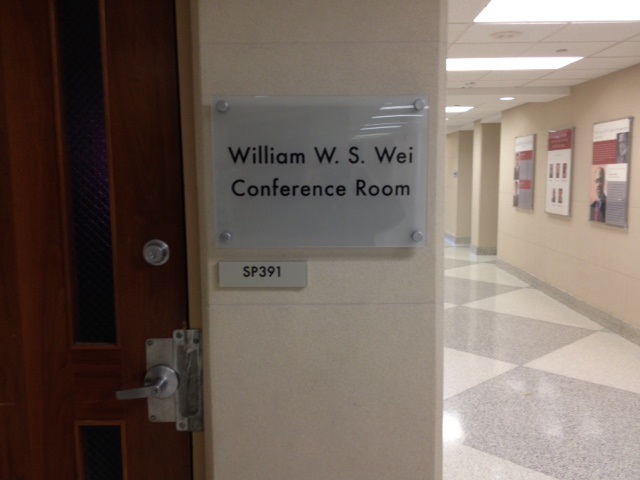
A coference room named with Prof. William W. S. Wei.
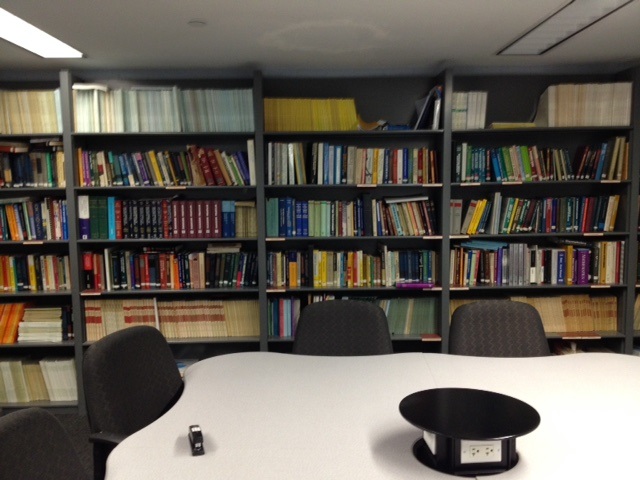
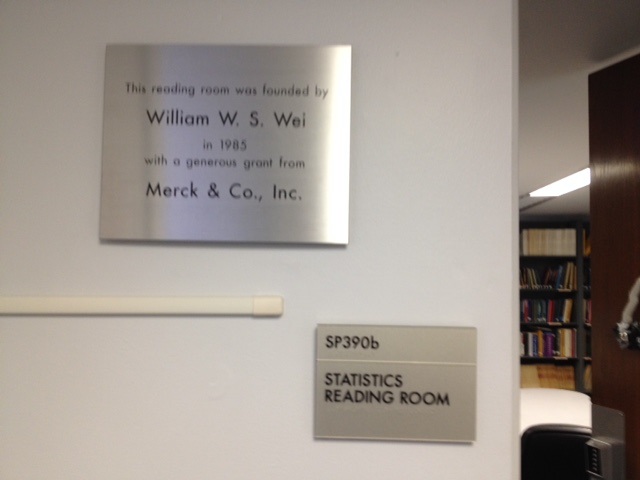
Statistics Reading Room



Fox School of Business faculty, staff, and alumni recipients of the 2016 Musser Award gather on the stage. (Ryan S. Brandenberg/Temple University Photography)
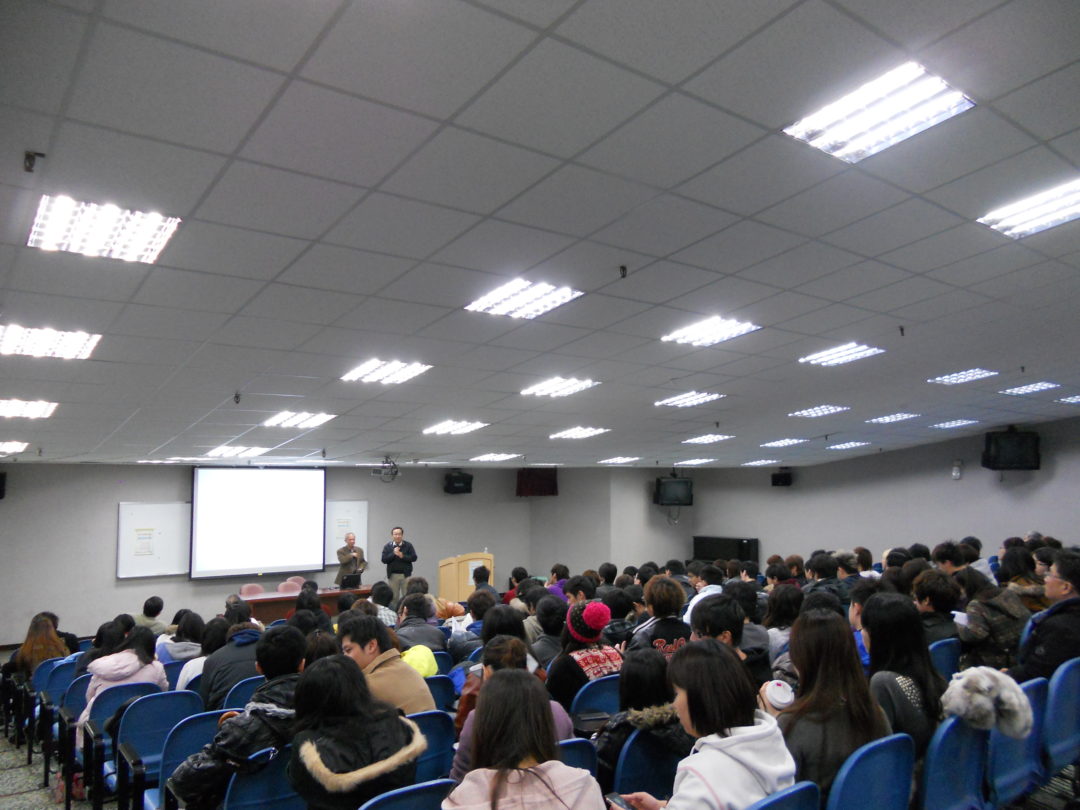 Invited lecture
Invited lecture
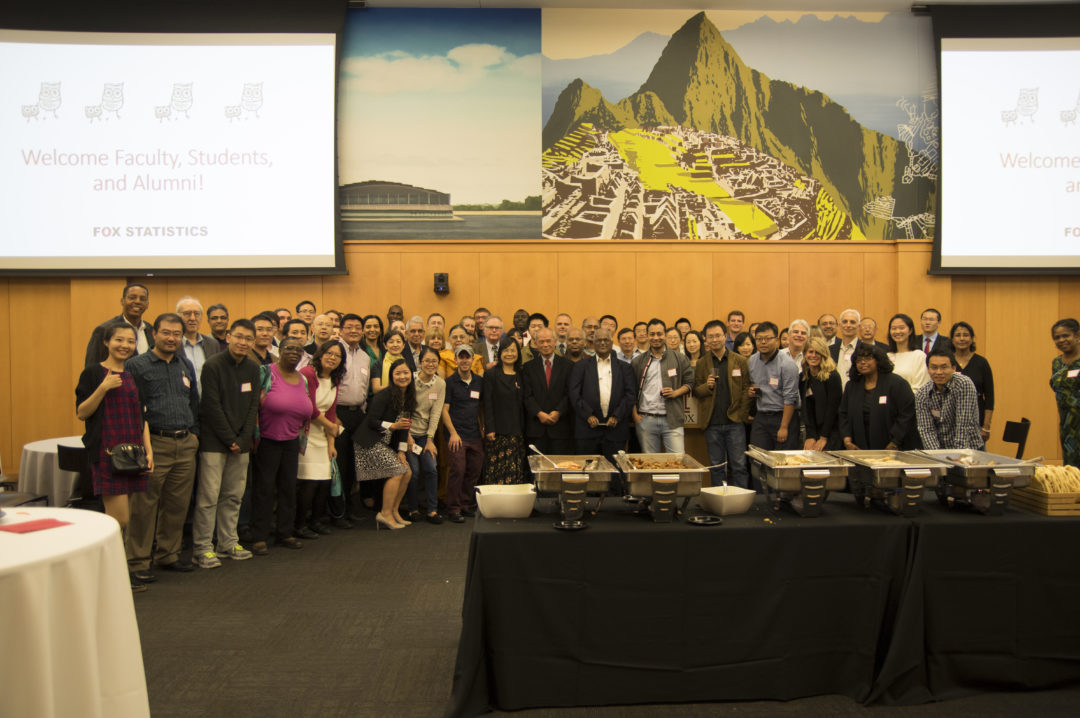 With my department faculty and graduate students.
With my department faculty and graduate students.
Source from Prof. W. Wei 07/2017
Posted in 07/2017

